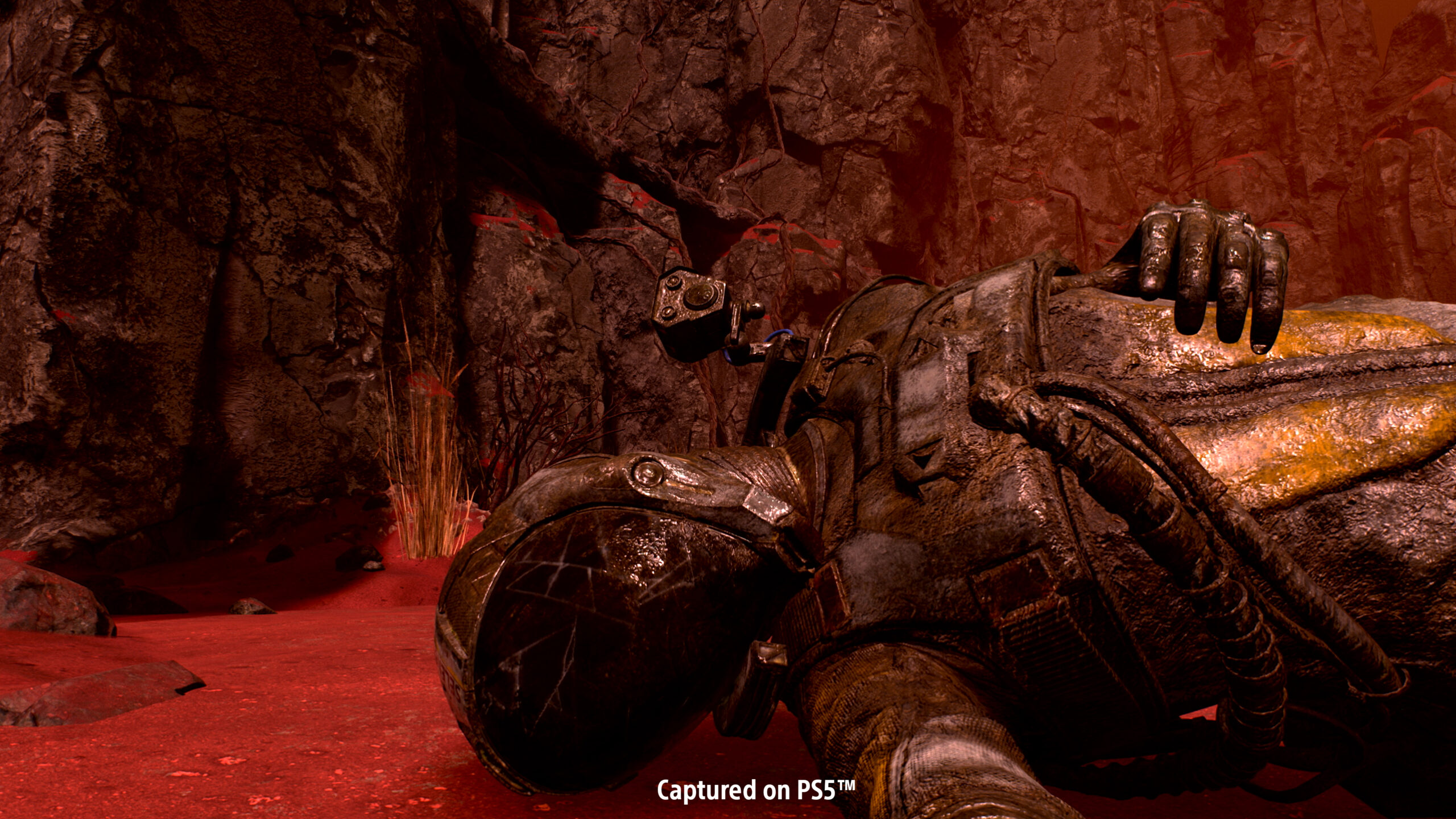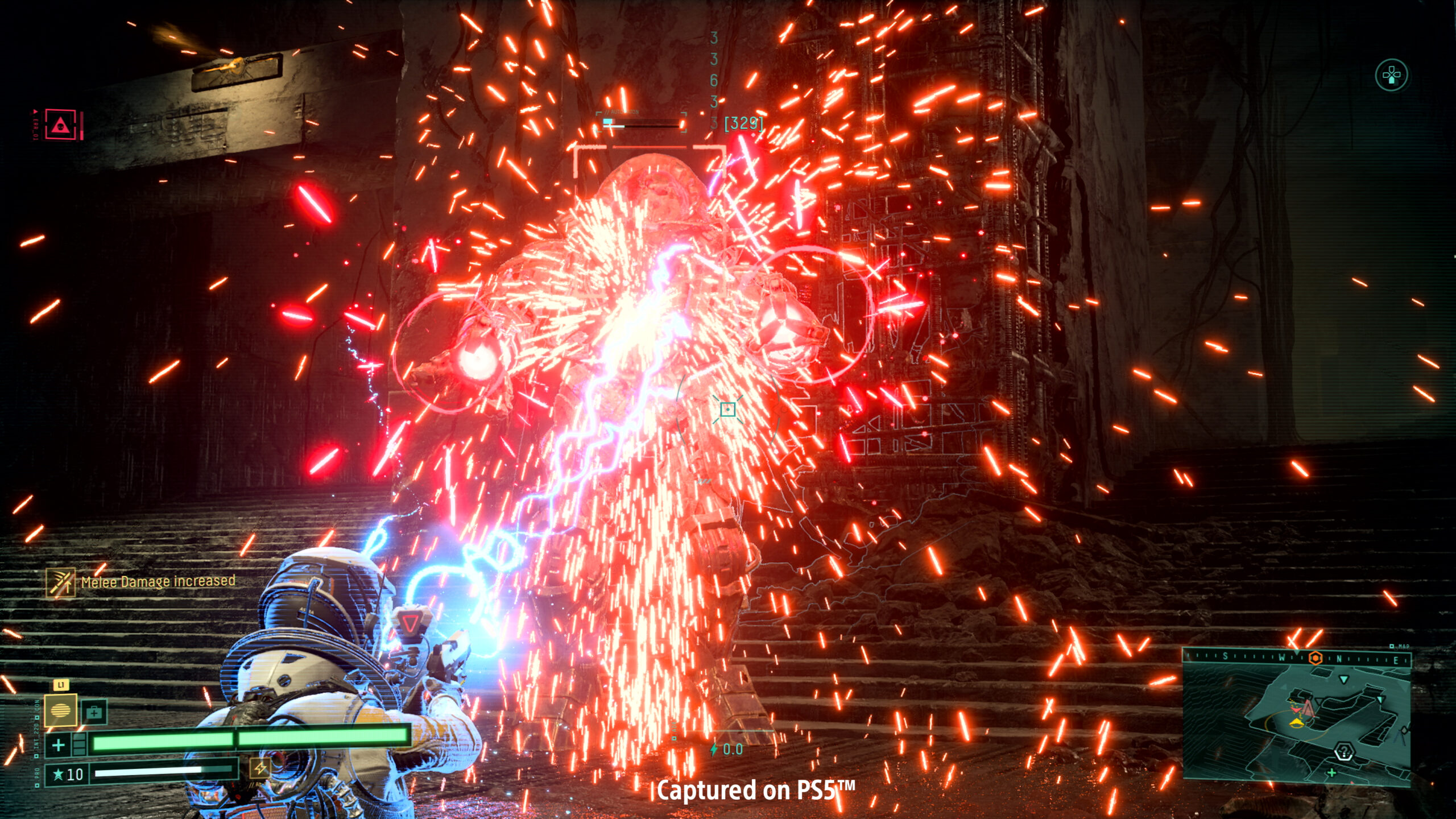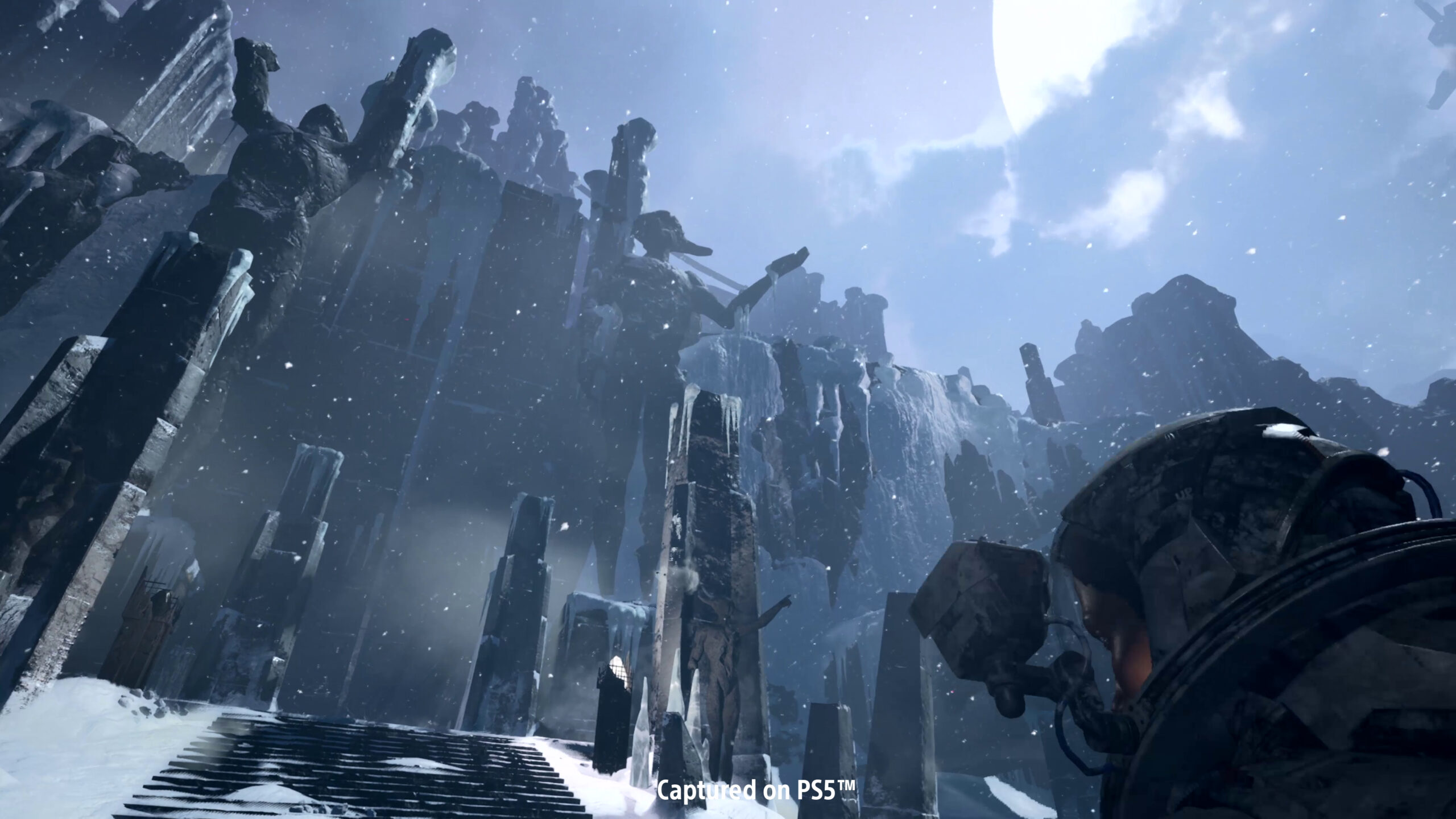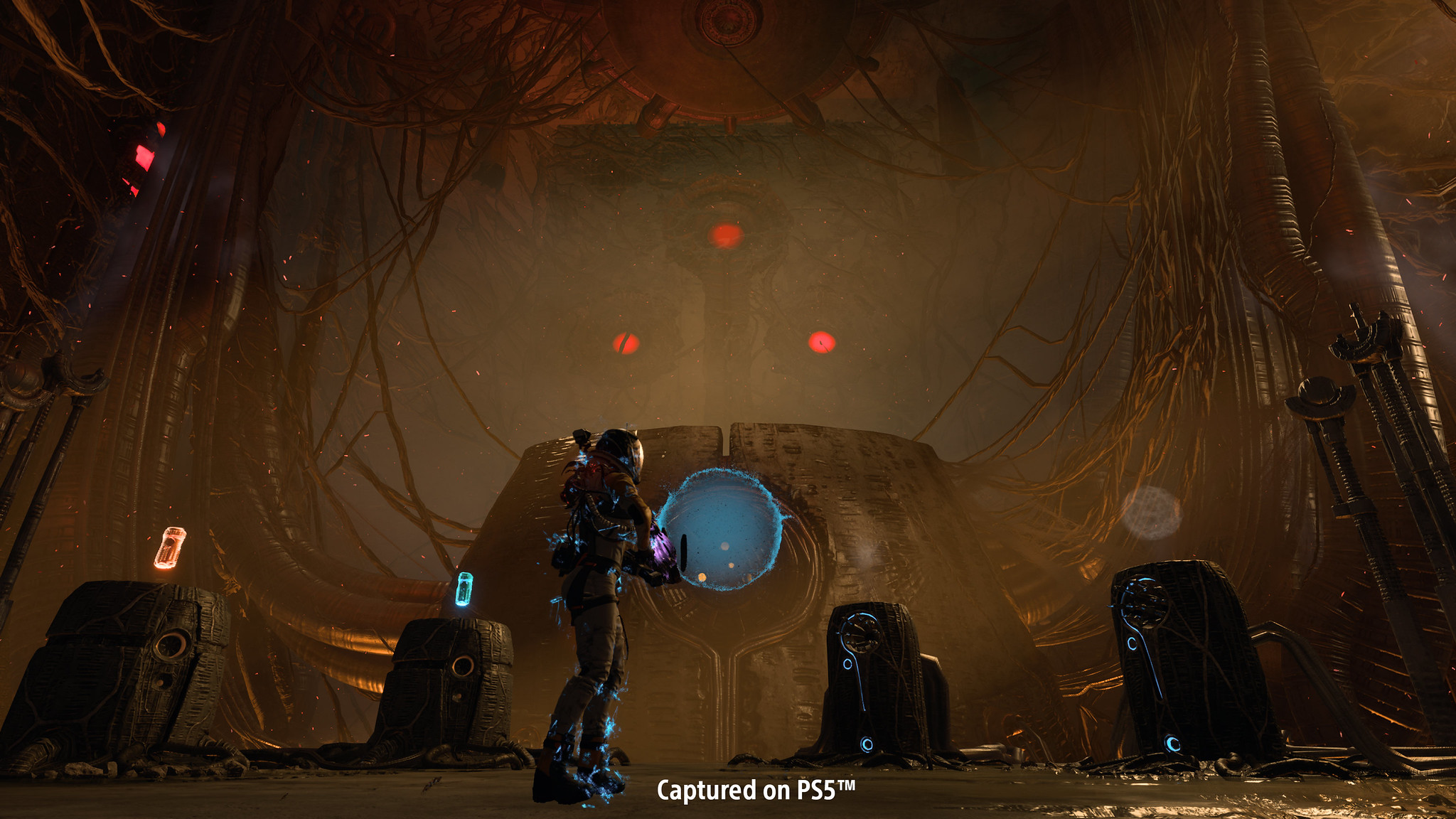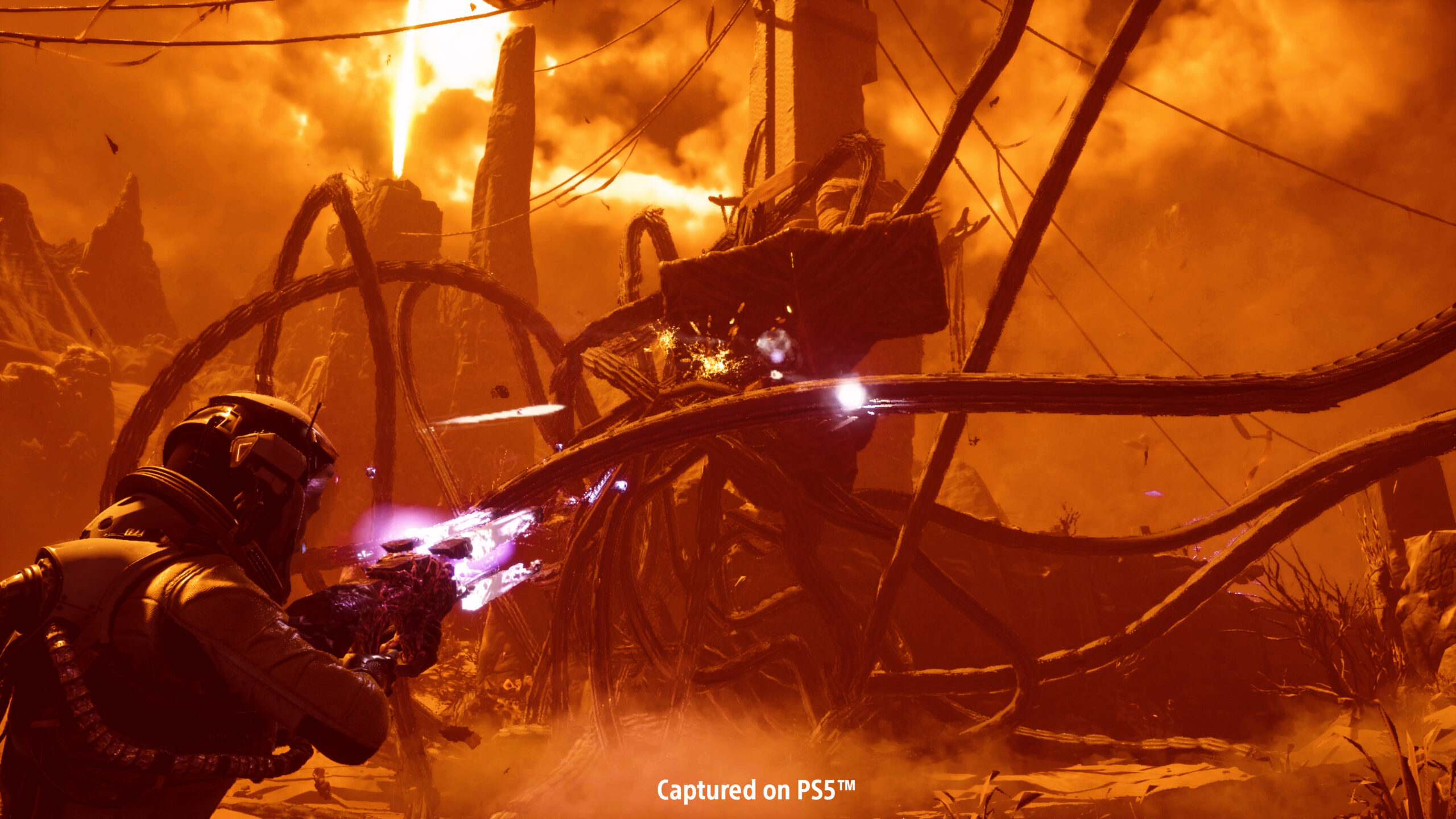
I’ve never been a fan of roguelikes.
Outside of Supergiant’s outstanding and innovative Hades, the genre’s focus on repetitious treks through procedurally generated dungeons and randomized items — often with a minimal narrative backdrop — just hasn’t ever appealed to me.
But Returnal, the latest game from developer Housemarque, is a rather different breed. By focusing on tight third-person shooting and tantalizing worldbuilding, the Finnish indie studio has come up with an exceptional PlayStation 5 game that feels refreshingly different from other roguelikes.
Who am I?
Right from the start, Returnal gets you hooked with an intriguing premise. You play as Selene, a space pilot who is stranded on the alien planet Atropos. After leaving your ship, you soon stumble upon the corpse of another pilot, who Selene realizes is none other than herself.
From there, Selene will have to work her way through the environmentally diverse planet to learn more about its mysterious inhabitants and this other version of her.
Admittedly, Returnal is a bit of a slow burn in this regard. You know very little about Selene to start outside of expositional monologues, which makes it difficult to connect with her early on. On the flip side, this makes exploration through Returnal‘s procedurally generated environments more compelling, as you’ll slowly come across audiologs from the other Selene that shed light on both Atropos and herself. Quite literally retracing your own steps makes for a rather gripping narrative hook.
Likewise, there are multiple house sequences taking you through Selene’s home on Earth in first-person, which simultaneously offer a nice break from the third-person action while illuminating you on what her life was like before crashing on Atropos.
Hit it with your best shot
On the subject of action, Returnal offers a remarkably clever twist on the signature “bullet hell shoot ’em up” gameplay that defines Housemarque games like Resogun and Alienation. Instead of controlling a small character or vehicle with the camera pulled back to show all of your enemies, Returnal brings the action much closer to home.
Thankfully, the shift to third-person allows for deeper, more satisfying shooting mechanics and surprisingly versatile guns. In Returnal, you have access to a variety of firearms that you can obtain throughout your runs through Atropos. While many of these fall within standard gun archetypes like pistols, rifles and shotguns, there are a slew of little bells and whistles here and there that shake them up.
First and foremost, Returnal makes phenomenal use of the PS5’s DualSense controller. Pulling the left trigger halfway will equip regular bullets, but pulling it down completely switches to alt-fire — an incredibly intuitive way to take full advantage of your guns’ capabilities. These alt abilities are shaken up each run, which offers a nice incentive to shake up your loadout as you play. All the while, the gamepad produces satisfying haptic feedback to give your shots that extra oomph, as well as other smart use cases like scattered vibrations to simulate Atropos’ rainfall and heighten immersion.
Further enhancing the gunplay is the Adrenaline system, which grants you buffs upon consecutive enemies defeated without taking damage. While randomized, these can offer such welcome benefits as additional homing missiles from your helper droid (a lifesaver when facing airborne foes) and an improved melee attack (especially useful on grounded creatures).
Guns also don’t use ammo, either, which is another welcome design choice. Not having to scavenge for ammo makes it easier to keep up with the barrage of energy blasts that enemies send your way, maintaining a nice rhythm to combat as a result. Instead, guns will overheat after a set number of shots, at which time you can ‘Overload’ it — think Gears of War‘s inventive Active Reload — with a timed button press to resume shooting quicker.
An ever-changing world
Atropos itself is where most of the roguelike elements come into effect. While the planet looks stunning in 4K with ray-tracing (which is, rather impressively, enabled alongside 60fps), its procedurally generated nature means it will be different each time you go through it.
In practice, this means you can come across such room configurations as a large enemy-filled space, a light platforming area or a small safe area containing loot. This, along with the six geographically different biomes (including a rain-soaked forest, ruins-filled desert and frozen city), helps make each run through Atropos feel distinct. You’ll also unlock navigational tools over time to open up previously inaccessible areas, which makes subsequent runs even more rewarding.
There are times when this system feels quite unfair, though. Sometimes, entering a room or taking a portal to reach a higher level puts you right into the face of a powerful enemy that gives you little time to gather your bearings. Beyond that, bosses can often feel like ridiculous bullet sponges, featuring multiple bars of health and a slew of relentless bullet attacks while you yourself whittle away with, at best, have one or two consumable healing items to back you up.
The randomization of items also sometimes feels overly punishing. At times, you’ll come across “Maligned” items that are corrupted by dark alien energy. This could apply to anything from a health capacity-increasing “Integrity” upgrade to a consumable or stack of Obelites (a form of currency that you can use to purchase items and upgrades in certain areas). You’ll be warned that taking the item has a chance of infecting you with a “Malfunction,” which applies a random negative status effect, such as instant health depletion, enemies leaving acidic pools when they die or Selene dealing less damage.
The problem, however, is that you’re only given a rough indicator of how likely it will be that a Malfunction will be caused, while no warning is provided as to what the debuff will be. While a risk-reward mechanic like this sounds solid on paper, Malfunctions are applied to all kinds of items, even basic ones, which often discouraged me from even taking the risk. While Ether — a permanent resource that you can acquire and carry over between runs — can be used to remove the Maligned attribute from an object, it comes by so infrequently (and has other uses, like unlocking new items) that it’s not worth the trade-off.
By and large, though, these issues don’t feel too grating when the core shooting-based gameplay and overall well-balanced mix of room types kept me thoroughly engaged. It also helps that the enemies themselves sport wonderfully grotesque designs featuring all kinds of wings, tendrils and other eerie appendages, making me eager to see what new monstrosity I’d face off against as I progressed.
A worthwhile voyage
There haven’t been many PlayStation 5 exclusives since the console’s release, which has no doubt put some added pressure onto Returnal. Fortunately, the game more than proves its worth.
While the difficulty level doesn’t always feel reasonable, Returnal nonetheless remains an engrossing experience thanks to its gloomy sci-fi narrative, rock-solid shooting mechanics and fascinating setting.
Even if you’re not normally a fan of roguelikes, Returnal is absolutely worth your time.
Returnal releases exclusively on the PlayStation 5 on April 30th.
For more on the game, check out our interview with Housemarque.
MobileSyrup may earn a commission from purchases made via our links, which helps fund the journalism we provide free on our website. These links do not influence our editorial content. Support us here.

